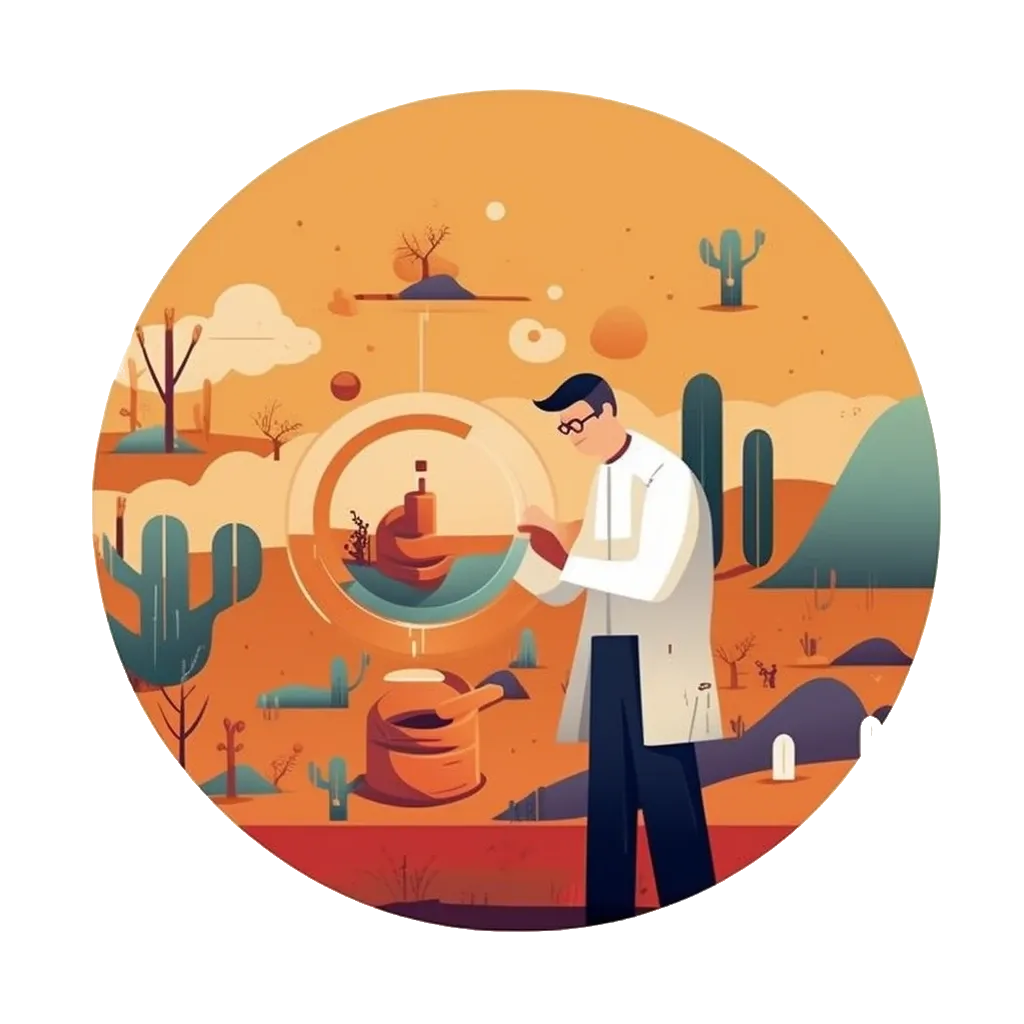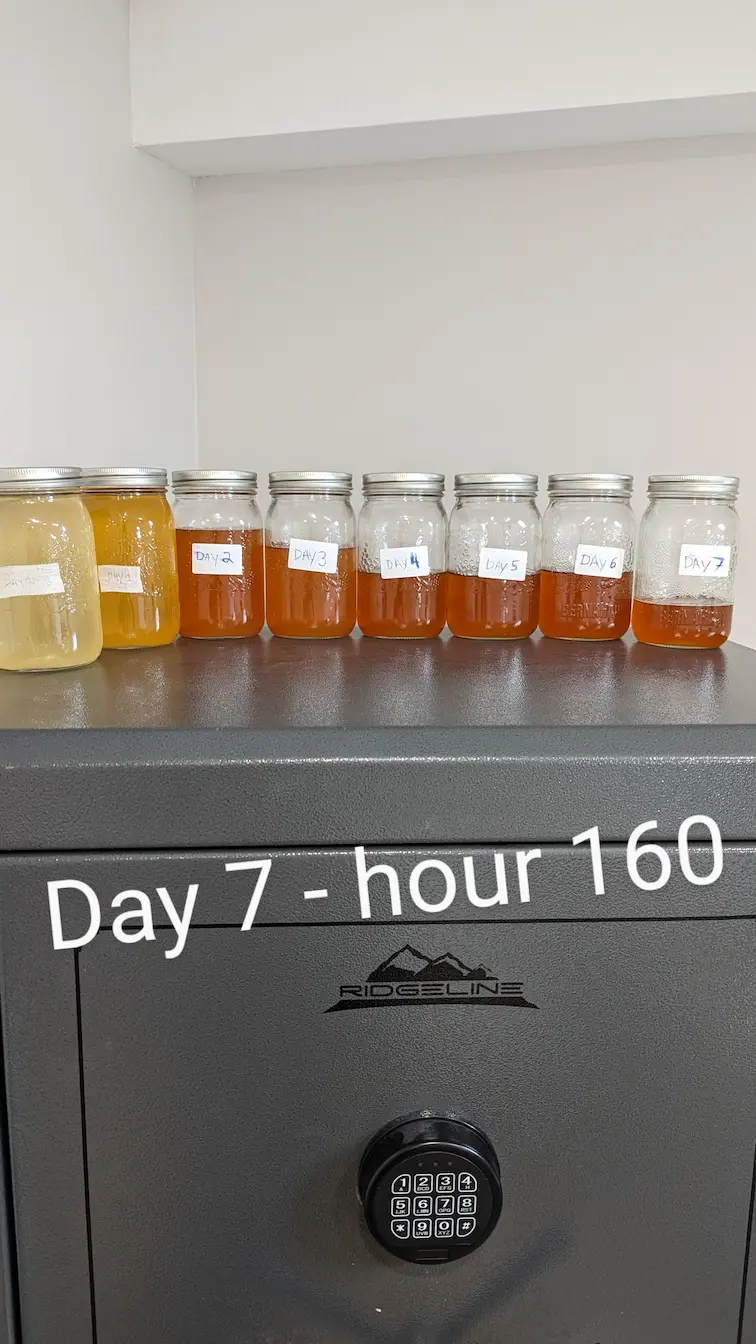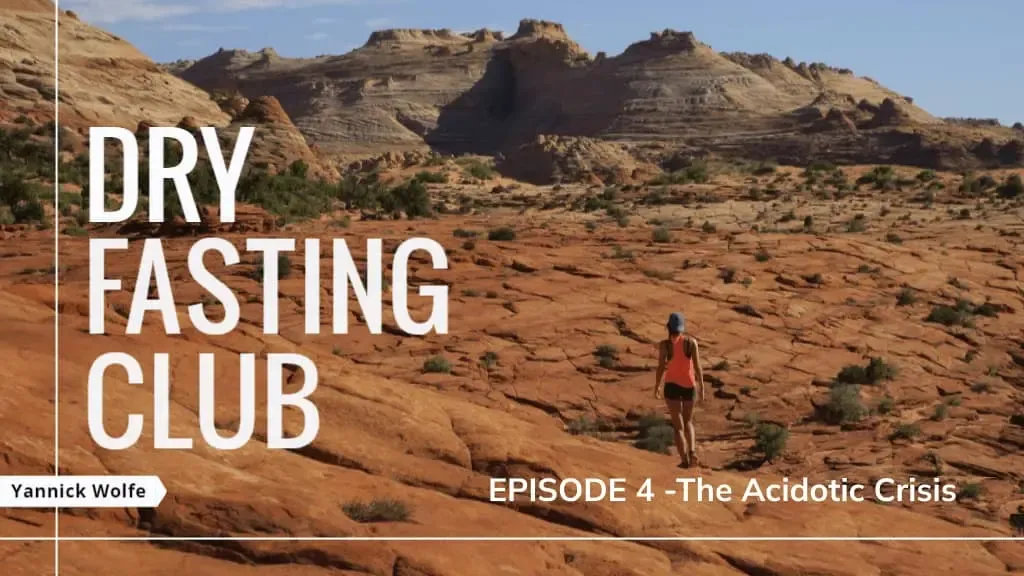How much weight can you lose in one day of dry fasting?
The first step to understanding dry fasting is to understand the stages of dry fasting. Dry fasting stages paint the picture that explains why it works as well as it does. It works for both weight loss and health, and it does it quicker than other forms of fasting. We’ll tackle each stage of a dry fast and try to give the most detailed breakdowns of what is supposedly happening, based on experiences and studies from dry fasters around the world.
What is dry fasting?
Dry fasting is a type of fasting where individuals abstain from both food and water for a certain period. Unlike traditional fasting, which restricts food intake, or water fasting, which restricts water intake, dry fasting requires the body to rely on its internal water reserves and metabolic reactions for energy. With roots dating back to ancient times for religious and spiritual purposes, dry fasting has potential health benefits such as reducing inflammation, improving metabolic health, and increasing longevity.
However, the risks, including dehydration, kidney stones, and urinary tract infections are there if you don't approach it correctly. Dry fasting durations vary, with some people opting for 24-hour fasts while others choosing longer periods.
It is crucial to stay hydrated before and after dry fasting and to consult with a medical professional beforehand, especially if one has underlying health conditions. When done properly, dry fasting can contribute to overall physical and mental well-being. It is the strongest type of fasting available, and some healing mechanisms can only occur while dry fasting. A 7-day dry fast is comparable to a 21-day water fast.
Prior to the first stage of dry fasting, it would be in your best interest to prepare as best as possible. This includes hydrating with the correct electrolytes, drinking a lot of water, and eating a keto-style diet. See more tips to prepare for dry fasting in this article.
Feel free to message the dry fasting club through Instagram or Twitter when seeking a coach. I may be able to help you, but usually, due to lack of time, I can recommend some other great coaches. Paying a fee to make sure you are properly guided is extremely beneficial, can save you months of trial and error, speed up recovery, efficiency, and prevent damage.

The first stage of dry fasting – Stop eating and drinking (3-8 lbs)
No food or water. The first stage begins your journey of removing food and water from your environment. During this dry fasting stage, seeing food, speaking about food, or smelling food causes anger and irritation. This feeling can persist for the first 1-3 days depending on the person.
Depending on if you are doing a soft or hard dry fast, you may also abstain from all contact with water. This would include no showers, no teeth brushing, and no bathing in water. Weight loss is expected to continue to be around 1.5 kg per day (3.4 lbs). Weight loss is mostly water weight as your body uses up its stored water without any source to replenish it.
The weight loss also depends on your level of pre-fast hydration. The more you’ve hydrated, the larger the drop will be over the next two days. Urine levels are highest on the first day, and they are also dependent on your level of hydration.
This stage of the dry fast is called the post-absorptive stage. You can read more about it in my post:

The post-absorptive phase of fasting. This is where most newbies who only do 1-2 days of fasting get stuck. This is a barrier you need to surpass. Get into ketosis and ramp up that lipolysis if you want to lose weight and trigger stronger autophagy. Power up the macroautophagy! pic.twitter.com/xtK1XcMKb4
— Dry Fasting Club (@DryFastingClub) April 20, 2023
In the post-absorptive stage, your body has just recently stopped eating, and the food is now being digested. As the glucose level drops you start to enter the glycogenolysis stage, where the liver's glycogen starts getting eaten up. This is a crucial stage, and it's very similar to stages experienced by intermittent fasters, ketogenic dieters, zero-carbs, and especially carnivore dieters.
The post-absorptive stage has three parts. The first is when the food is still being digested and providing glucose. The second stage is when that dietary glucose starts running out and it signals 'uh-oh' to your body and tells it to start releasing the stored glycogen. Glucagon raises, and insulin drops. The post-absorptive phase continues into the second stage of dry fasting.
The second stage of dry fasting – Weight loss and ketosis (2-3 lbs)
Since your body is now without food and water for over 24 hours, you are entering into deeper ketosis, as your body quickly eats up glycogen and starts to run low on stored water. This is the stage that blends both the post-absorptive stage and the gluconeogenic phase. Gluconeogenesis starts up even before all your liver glycogen is eaten up. There are alarm bells going off in the body and its starts to rev up.
The problem is that during this stage your body is both burning your muscles and fat to supply glucose, water, and minerals. Fat is being turned to glycerol, while the muscle is turned to lactate and pyruvate which will be turned to glucose in the liver. This is the transition stage everyone talks about. The keto flu stage. It's not fun, but I've also come up with some preparation protocols to minimize the struggle and improve your experience. Read about the protocols here:

Autophagy has started to increase rapidly. Weight loss is expected to be around 1 kg per day (2.2 lbs). The body is still dropping some stored water but is slowly starting to transition to endogenous water production. This water comes from your fat cells and starts to build up ketones in your blood. The body starts to become more acidic.
Day two of a dry fast is recognized by possible headaches, nausea, and urges to eat and drink. This is due to multiple factors. Blood sugar levels drop drastically, the body starts to burn fat as fuel instead of carbohydrates, and possible detoxification symptoms start occurring as autophagy increases.
As the day progresses, you get less and less hungry. Thoughts of drinking water may start to occur. Urine production slows down aggressively and starts to turn a deeper orange as internal water runs out. Urine may be cloudy due to alkalinity, yeast infections, or other factors.

The third stage of dry fasting – Acidotic Crisis (2-3 lbs)
The body switches to fat for water and nutrition. Headaches and problems from the first two days tend to disappear. Mind clarity increases sky-high. The brain feels oiled and running in full gear. Sleep may start to get affected. Feelings of thirst increase while hunger tends to disappear. The tongue may start to get coated with a white plaque while symptoms of dry mouth appear.
Significant improvement in overall well-being. Some call the acidotic crisis the stage of adaptation. Feelings of improvement may come and go in waves but should increase overall. The Acidotic crisis which, on average occurs on day 3 during a dry fast, is the same acidotic crisis that appears for Water fasting at around day 7. This is a clear indication that the ketosis effect is twice as strong on dry fasting than on water fasting.
Experienced fasters aim to enter the acidotic crisis because they claim that this is where the real benefits of dry fasting begin. Autophagy is at its maximum. Fat loss reaches maximum levels as the body is now supplying its own water by eating its fat cells.
Weight loss is expected to continue to be around 1 kg per day (2.2 lbs). Weight loss may increase by doing light exercise while dry fasting, but it is not advised on the third day and up. Urine production speeds up a little bit compared to day 2. Urine is now darker than on day two. It should also start clearing up if it was cloudy previously.
Just reaching this stage is cause for celebration, considering that many aim to complete 7 days of water fasting for health benefits. Dry fasting for just 3 days lets you achieve the high level of fat burn necessary for the acidotic crisis.
Don’t forget that the refeed is part of the healing process, so your body will continue to heal in a state of high ketosis for another few days as you very slowly ramp up your food and water intake. Highly recommended to meditate as often as necessary and to continue throughout the remainder of the fast.
Different autophagy that get activated during a dry fast
- Macroautophagy: The primary and most well-understood mechanism. In this process, cellular components, including damaged organelles and protein aggregates, are first sequestered within a double-membraned structure called a phagophore. The phagophore expands and seals off, forming an autophagosome. This autophagosome then fuses with a lysosome, where its contents are broken down and recycled.
- Microautophagy: A less common mechanism wherein the lysosomal or late endosomal membrane itself invaginates to engulf cytoplasmic materials directly. The invagination then pinches off, forming vesicles inside the lysosome where the engulfed material is degraded.
- Chaperone-mediated autophagy (CMA): A highly selective form of autophagy. Specific proteins are recognized by molecular chaperones in the cytosol. These targeted proteins contain a recognized pentapeptide sequence, which allows them to be translocated directly across the lysosomal membrane where they are then degraded.
- Mitophagy: A specialized form of macroautophagy that targets damaged or superfluous mitochondria for degradation. This process is crucial for cellular health, as dysfunctional mitochondria can generate harmful reactive oxygen species.
- Pexophagy: This is the selective degradation of peroxisomes, which are small, membrane-bound cellular structures involved in a variety of metabolic reactions, including the breakdown of fatty acids and the detoxification of harmful molecules.
- Ribophagy: A more recently identified form of selective autophagy that targets ribosomes, the cellular machinery responsible for protein synthesis, for degradation. This process helps the cell adapt to changing nutrient conditions and ensures the turnover of ribosomes.

The fourth stage of dry fasting – The body fires up
Pressure drops and body temperature may rise. Autophagy is firing on all cylinders, and due to the hormetic effect, there are new mechanisms that get activated because of the extreme ketoacidosis the body is now in. Your body enters a hypertonic state which has been proven to upregulate autophagy and unlock a new level. It's called microtubule-dependent autophagosomal clusters.
This also goes hand in hand with chaperone-mediated autophagy. Because by the fourth day, you are entering the lowest level of urine excretion, which shows that this stage is a key point in the dehydration cycle. Just take a look at the previous picture showing the lined-up urine. You notice that day 4 stabilizes and every following day has a very similar amount.
This is critical in maintaining, and why it's so important to only do approved exercises, take it easy, and let the body do its work. The body activates processes to regulate the remaining water, produce more metabolic water at a constant rate, and pee out the necessary compounds.
Optogenetics helps researchers study the role of the microtubule end-binding protein, EB1, in the growth of neurons. https://t.co/fwmTUxBNGp pic.twitter.com/yX2pvaQhxM
— eLife - the journal (@eLife) April 21, 2023
Microtubule-dependant autophagosomal clusters refer to a healing mechanism that only occurs in hyperosmotic states. I talk a lot about this in my videos.
It's a mechanism of healing that can't occur anywhere else, including water fasting. In fact, you could water fast for 100 days and you would never unlock this healing process that occurs during the fourth stage of dry fasting. In this stage, your cells start to repair on a molecular level. The microtubules start being repaired inside the cells, think of them as the skeleton structure of the cell.
Like these fine lines that travel up and down, almost like the cell's own highway system. This highway system transports lysosomes inside your cell. The main player in autophagy. The microtubule network degrades with age and viral damage, so cleaning this up is similar to aging backward in terms of health and vitality.
During the fifth stage of dry fasting, sleep is affected, and it may take considerable effort to fall asleep. The insomnia can be one of the hardest symptoms to overcome. Some attribute this to higher levels of cortisol from the fight or flight response circulating in the blood.
Others believe that as your body is no longer digesting, and is cruising at max ketones and endogenous water, your body no longer requires as much sleep. I personally subscribe to the cortisol theory and use a few proven methods to downregulate cortisol as my advice for anyone suffering from sleep loss. Weight loss is expected to continue to be around 1 kg per day (2.2 lbs). Urine levels remain a similar color and a slightly smaller amount compared to day 3 urine levels.
The fifth stage of dry fasting – Aches, and pains
The fifth day of a dry fast is known as the aches and pains day. Typically around this day, you start to feel pain in certain body areas and organs. Many experienced fasters speculate that the aches and pains identify the areas that require healing.
These areas are undergoing targeted autophagy and possibly other mechanisms too. Heat increases a little bit more than on the fourth day and blood pressure may fluctuate depending on the person. Weight loss is expected to continue to be around 1 kg per day (2.2 lbs).
It is today that you gain the olfactory upgrade known as the bloodhound's nose. A very common symptom that can occur even earlier than this day, but by day 5 your senses should skyrocket. This is just an additional reason why dry fasting is such a powerful healing mechanism for Long Covid as well. The postviral symptoms include things like perpetual sinus congestion followed by taste and smell disruption.
What Long Covid sufferers notice on their first drive by the fourth and fifth stage of dry fasting is their ability to suddenly smell a bun coming out of the oven a mile away. The power of the nose improves exponentially, even for those who have not suffered any olfactory degeneration. An amazing upgrade to the sense of smell and taste which can supplement your cooking skills for years to come.
Common areas where you feel pain during stage five, are the lower intestines, liver, and kidneys. You also can start feeling pains in the lower back and spinal area.
This can be done in a variety of ways. Read up on lymph-clearing exercises and stretches.
The sixth stage of dry fasting – Exiting the Acidotic Crisis
The final day of the acidotic crisis approaches. This is where you get to squeeze out the remainder of the health benefits from the fast. During day 6 of the dry fast, your sense of smell reaches new levels.
You are able to smell even the faintest of smells. You start to appreciate everything’s unique smell around you. Aches in the lower back are common from being in one position too long such as sitting or standing. Sudden movements should be avoided as you get lightheaded very quickly when standing up. Weight loss is expected to continue to be around 1 kg per day (2.2 lbs).
On my most recent dry fast, I remember vividly exiting the acidotic crisis late on the 6th day, and even into the early seventh day.
Intense irritation, headache, and just a general feeling of BLEH. I even argued with my wife over some petty problems that I would not have normally. Quite silly, but a powerful realization, and hopefully something you can keep in mind once your healing journey takes you this far.
I exited the sixth stage of dry fasting so late due to a few preparation protocols I practiced and experimented with for this newest fast. It allowed me to skip the keto flu transition that is usually observed during the second stage of dry fasting. But I think in retribution, my sixth stage was slightly prolonged. A little bit of give and take from the body makes a lot of sense.
Once again, I repeat my mantra. Dry fasting has an air of mysticism to it, but paired with a scientific approach you can harness its power the way we harness the power of nuclear energy. Delicate tweaking under controlled environments, providing explosive energy.
The seventh stage of dry fasting – Stabilization
The final day of the seven-day dry fast is marked by body stabilization. You feel better than ever. It is described by many as a euphoric feeling. You feel lightness and joy. Body temperature lowers and stabilizes alongside blood pressure. Your body has adapted to changes that were brought about through metabolic acidosis. You can expect headaches to stabilize.
Remember, this stage does not necessarily occur exactly on day 7, it can be slightly delayed or prolonged. Once again, it depends on a multitude of factors.
This is where most experienced dry fasters prepare to break the fast and begin the refeed. The refeed is argued by many to be the most important part of the healing journey, but often not done correctly. Once you start drinking water and bone broth, there is an urge that takes over 'the faster' to eat. It is very difficult to take it slow, and that is why many people will disturb the health benefits by eating too much too quickly.
As I update this article, I am on day 8 of a dry fast being live-streamed from my home office. You can check it out on the youtube channel or the twitter page.
But remember, it's hard to know who's truly had the experience you're looking for, so make sure to take all advice with a grain of salt.
To quickly summarize day eight of the dry fast. I have already completed an 11-day dry fast previously, this will be my second one. Days 8, 9, and 10 are representative of a new building up of a second acidotic crisis. This one continues the work started in the first one and is said to get to the root of the worst problems and illnesses. With some diseases, depending on how quickly you want to heal from them, you'll need to push to these levels. It's never advised to do it without some sort of mentor.

The Refeeding stage
The refeeding stage is the most important stage of any fasting method. For dry fasting, in particular, it is advised by most to take twice as long to refeed than it took to fast. So if you’ve dry fasted for 3 days, it’s recommended to refeed carefully for 6 days before jumping back into eating everything.
The refeed starts with just bone broth for the first day and adds food slowly over the course of the next day. Read more about the refeeding process, syndrome, and more.
According to Dr. Filinov, there are another 5 stages if you continue to dry fast for longer than 7 days. To read those accounts please click here, or find resources dedicated to the full eleven-day dry fast used by Filinov.
I recently live-streamed an 11-day dry fast from my home office, showing that understanding dry fasting on a deep level allows you to perform it anywhere and everywhere. The live stream is proof that dry fasting is not all mystical and magical, but is in fact rooted in science and is very replicable. See it here:

Tips to make your dry fast easier
- Remove food and liquid from around you. If you can’t see it, it will be one less obstacle for your mind.
- Abstain from sexual activity. The energy required, and subsequent energy loss (males) can lead to extreme dehydration and affect the fast.
- Breathe only with your nose, and avoid talking. Dry mouth is a common occurrence with dry fasting
- Eat a keto diet for a week prior to the dry fast. This enables your body to handle ketosis better and avoids the drastic change from burning carbohydrates to burning fat. This change is responsible for many symptoms that can occur prior to the acidotic crisis like headaches and nausea due to blood sugar levels
- Hydrate aggressively prior to starting the dry fast. This includes making sure you are getting a good amount of electrolytes and water which will limit the upregulation of aldosterone during the dry fast.
- Do not exercise extensively while dry fasting. In fact, the less you do, the safer and easier the fast will be. Doing cardio, intense exercise, or using the sauna will push your body into another level of dehydration which will cause an upregulation of aldosterone, and may damage the kidneys. This will cause water retention in the body.
3 Day Dry Fast Stages Explained
Final Note
Dry fasting is filled with stages that you need to be aware of as you progress through the days. Not everyone is the same, so your experience may totally differ from someone else's.
However, most of these stages have to be traversed one after another. If you pass the first acidotic crisis on day 3, your friend may pass it on day two. Things that can affect this are plenty. Metabolic health, fasting experience, initial fasted state, glucose levels, prior illnesses, body shape, body weight, sex, and more. This is why knowing what these stages are is key. I wouldn't want you to be flying blind.
Getting the help of a coach who has the knowledge to guide you, and explain each process as its happening is critical for your mental well-being. And mental well-being is another component that is widely overlooked on a dry fast. Find a coach if you can afford it, and deliver yourself some piece of mind as you embark on this fasting journey.




